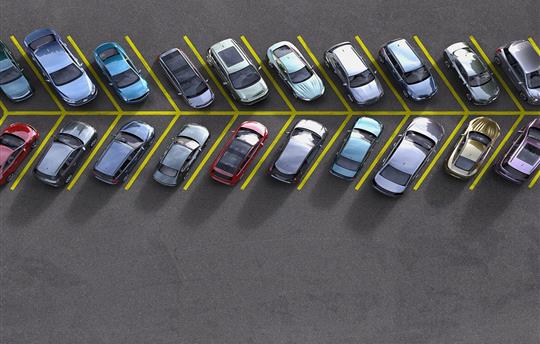17 Direct Marketing Tactics that Drive Consumers In-Store
2/7/2019 Kevin Nuernberger

The key drivers for growing a successful, strong brand have stayed the same over the years. Your buyers still want the same three things: an irresistible product deal, a connection with you (the brand), and convenience.
So, how do you deliver what customers expect? In today’s omnichannel environment, a strategic direct marketing approach is essential for engaging customers and winning their loyalty.
Where do you start? Here are 17 direct marketing tactics that will help drive consumers into your store.
- Personalize your brand. While the deal may be the driver, a personalized experience closes the deal. Present images of store managers, techs, owners and floor personnel in your messaging. Online and offline, consumers still count on a human touch.
- Customize your copy. It’s not enough to sprinkle a consumer’s name on a website or form. That feels generic in today’s world. Also pull in geographic detail, directional key words, calendar events, and local and state imagery so recipients know the message was truly meant for them.
- Show you can relate. Your buyer responds to visual cues as well as text, so leverage what you know to control the offer and how it is laid out. A message with vivid, relevant product imagery in a familiar context with accurate store mapping is portable across all digital media and mail.
- Curate your product. You learn about customers’ priorities based on their web searches, clicks, inquiries, redemptions, purchases and past responses. So, present collections that quickly attract their eyes and forget the stuff they won’t bother to view.
- Deliver value. Content marketing is the currency of the blogosphere, but long before that, direct mail, catalogs and newsletters shared editorial to engage readers. People still crave information, so deliver content that has value. Empower your customer with knowledge.
- Add meaning. Inspire your buyer with a greater purpose. Your message should answer these questions: How does this product/brand work? How will it make me better? How can it solve my problems? How will it make my life easier, better, more interesting, more convenient, etc.?
- Make it a game. Most consumers will play a game if there is a reward. Quizzes, contests, games, puzzles and trivia spark interaction. Games education (whether online or offline) and can be a tool for gathering additional data.
- Cash in with coupons. The traditional static coupon litters every grocery bulletin board and tells a marketer little upon redemption. But customized variable-coded, feature-rich coupons drive consumers to websites and into stores. PURLs and invite codes help track buyer activity online and offline.
- Capture attention with QR codes. Eliminate the distracting leap smartphone users make from mailpiece to laptop. QR codes on handhelds are tickets for admission to brick-and-mortar events.
- Loyalty programs unlock information. These are really trading platforms where consumers receive value in exchange for personal information. If you don’t have one yet, get started. Cards and mobile apps are a vehicle for entry.
- Pixel tracking works. Re-target buyers who abandon carts and browsers who don’t authenticate. Combining a visitor’s IP address with GPS technology, you can invite a prospect to your local store and follow up with direct mail.
- Manage trigger programs. Manage your messaging to acknowledge, thank, review and upsell purchases. Remember birthdays. But beyond that, be careful how often and why you reach out to customers. Your goal is to optimize store visits without fatiguing the reader.
- Integrate mail and email to build traffic. USPS Intelligent Mail Barcoding alerts you about the peak time to send complementary email and post-display ads. Informed Delivery enables URL activation of physical mail offers before they hit the mailbox.
- Invest in targeting analytics. In addition to traditional RFMs, employ multivariate response modeling to identify high-propensity buyers and prospects.
- Promote your “click and collect” capability. Use digital mapping, hand-held tickets and parking passes for order pickup. This works interchangeably offline and online.
- Deliver the best creative. Website designers, display ad artists, direct mail and email writers all have category-exclusive skills. Integrate carefully, with clear goals and branding guardrails. Prepare for their advice and diverse approaches.
- Use your store to energize repeat visits. Educate floor staff about your direct marketing promotions so every customer who enters is greeted with the same smiling face and welcoming story.
Capitalize on every ‘store’
Brick, mortar and digital are essential components in the most successful customer journey.
While retail’s ultimate goal has never changed, the way we reach customers has evolved in our omnichannel environment. Traditional media like direct mail needs to be partnered with email, SMS, online displays and more to inspire orders and visits. We have more access to customer data than ever before, and retailers can leverage this information to connect more deeply with consumers who are looking for a retail experience.
Retail has always been about satisfying customers with a desirable product at a compelling price. But today, consumers purchase products in a range of venues: online, offline and in-store. Successful retailers will capitalize on all three “stores” to engage consumers so they’ll become loyal, regular shoppers.
Kevin Nuernberger is Director Business Development for RRD Marketing Solutions, helping clients improve their direct marketing ROI with high performance direct mail strategy. Learn more about our direct mail solutions today.